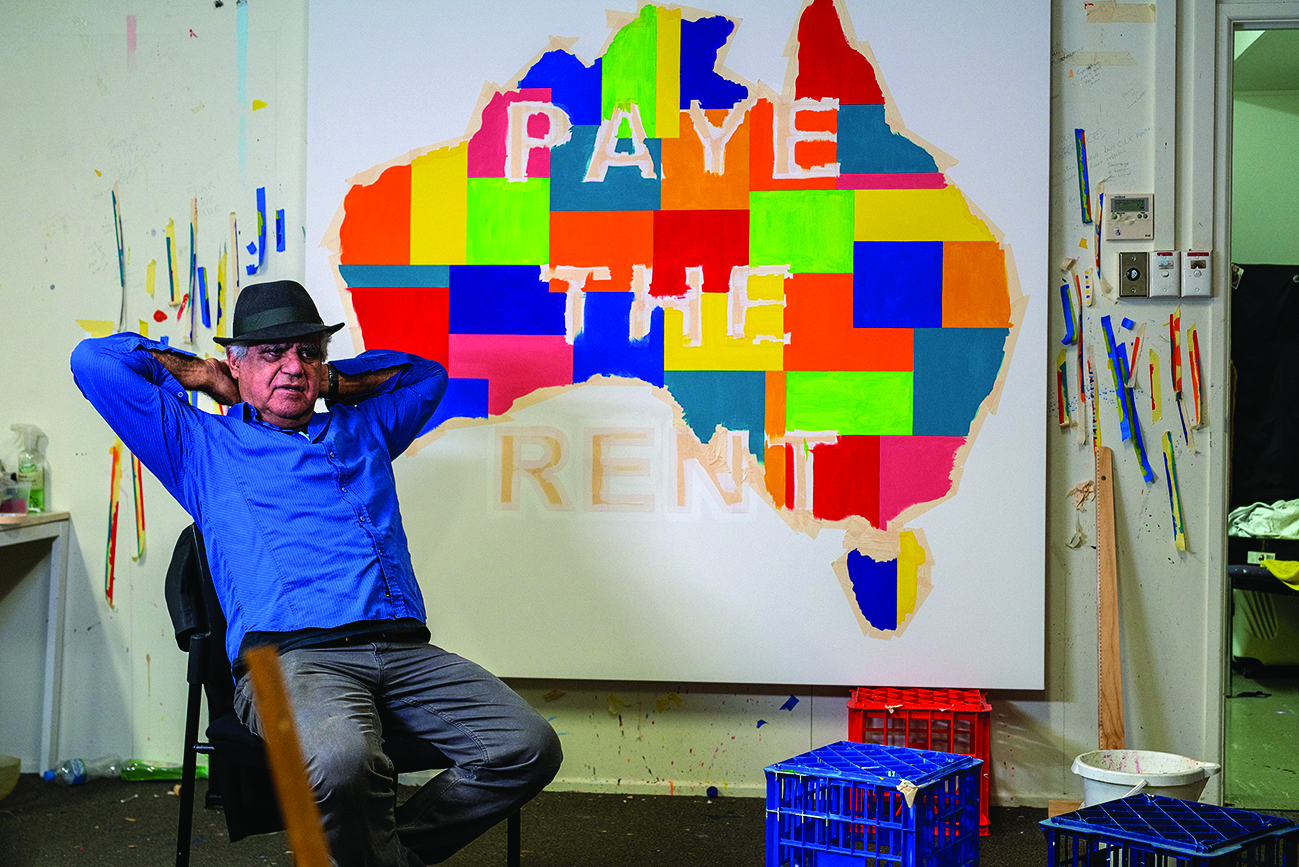When approaching an Aboriginal activist artist like Richard Bell, the first question that needs to be asked is: can there be a First Nations art that is not, in some way, activist? It is a relevant question to begin with because, as Arrernte/Kalkadoon art historian Hetti Perkins and many others have noted, even commercially successful and culturally ‘mainstream’ examples of First Nations art are and have been thoroughly activist.[1]See Hetti Perkins, ‘Hetti Perkins: You’re Aboriginal All the Time … You Can’t Just Clock Off’, The Guardian, 7 July 2014, <https://www.theguardian.com/culture/australia-culture-blog/2014/jul/07/hetti-perkins-youre-aboriginal-all-the-time-you-cant-just-clock-off>, accessed 30 December 2022. Think, for example, of the internationally celebrated works of Papunya Tula and the wider Western Desert art movement: these paintings adorn the walls of affluent white Australian homes, boardrooms and parliaments across the nation – indeed, across the world – and yet Western Desert art remains a vital expression of cultural survival, self-determination and economic empowerment for remote Aboriginal communities.[2]See Anthony Ham, ‘Australia’s Western Desert Art Movement Turns 50’, Smithsonian Magazine, 13 May 2022, <https://www.smithsonianmag.com/arts-culture/australias-western-desert-art-movement-turns-50-180980067/>, accessed 17 November 2022. Think also of the prestigious productions of Bangarra Dance Theatre,[3]See Stephen A Russell, ‘A Light in the Dark: Nel Minchin on Firestarter – The Story of Bangarra’, Metro, no. 208, 2021, pp. 44–9, available at <https://metromagazine.com.au/a-light-in-the-dark/>, accessed 17 November 2022. or the popular songs of artists like the late Archie Roach[4]See Barnaby Smith, ‘Lingering Notes: A Song Cycle Remembered in Philippa Bateman’s Wash My Soul in the River’s Flow’, Metro, no. 213, 2022, pp. 70–4, available at <https://metromagazine.com.au/lingering-notes/>, accessed 17 November 2022. or Mandawuy Yunupingu.[5]See Ross Purdie, ‘Yunupingu Broke Indigenous Barriers’, News.com.au, 3 June 2013, <https://www.news.com.au/national/breaking-news/yunupingu-broke-indigenous-barriers/news-story/546d6fe2c0a8b872548bf2b48d2e5611>, accessed 17 November 2022. The messages these artists have conveyed – dealing with subjects such as cultural genocide, treaty and the stolen generations – are anything but watered down for the sensitive constitutions of mainstream white audiences. When Aboriginal artists have claimed the eyes and ears of mainstream Australia, they have rarely missed the opportunity to say something real and vital.
So if these much-loved popular examples of First Nations art are politically radical, where do we place a provocateur like Bell – a rusted-on activist, an arch disruptor and an utterly committed pain in the colonial establishment’s arse? Bell is the man, after all, who won the first prize at the Telstra National Aboriginal & Torres Strait Islander Art Awards in 2003 for his simple and brutal subversion of Western Desert painting Scientia e Metaphysica (Bell’s Theorem), emblazoned with the slogan ‘Aboriginal art – it’s a white thing’. He is also a man who has made it his artistic mission (just one of many) to shatter convenient white concepts of who is Aboriginal and of what Aboriginal art is. If the art decorating Canberra’s Parliament House is activist, what do we call Bell’s?
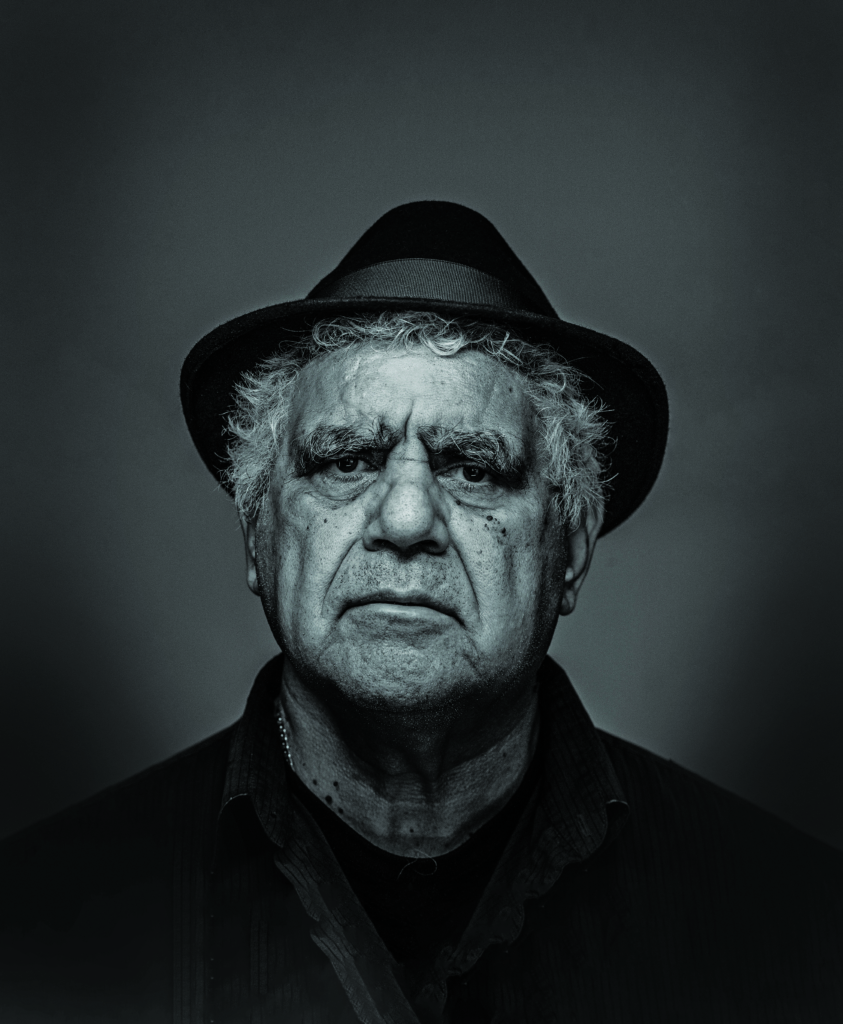
You could say Bell’s struggle is a David-and-Goliath fight with the monster of colonialism. His messages are often simple and direct, literally printed over his paintings: ‘Not yours to lose’; ‘Pay the rent’; ‘You can go now!’ But Bell’s particular nemesis is more defined than just the white colonial State. His true enemy is the art industry itself – the industry that, he argues, created the very idea of Aboriginal art as a commodity from which non-Aboriginal people get rich.[6]See John McDonald, ‘Provocative Artist Richard Bell’s Message Rings Like a Clarion Call’, The Sydney Morning Herald, 15 October 2021, <https://www.smh.com.au/culture/art-and-design/provocative-artist-richard-bell-s-message-rings-like-a-clarion-call-20211008-p58ydg.html>, accessed 17 November 2022. As Bell sees it, it is this colonial mechanism, the ‘art industry’, that has constructed the cultural value of Aboriginal art in reference to an entirely Western and imperialist aesthetic architecture. To quote from the declaration of principles he published in 2002, ‘Bell’s Theorem’:
Like some voracious ancient God, Western Art devours all offerings at will. Sometimes the digestion will be slow and painful. However, it is resilient and will inexorably continue on its pre-ordained path that is to analyse and pigeonhole everything.[7]Richard Bell, ‘Bell’s Theorem: Aboriginal Art – It’s a White Thing!’, The Koori History Website Project, November 2002, <http://www.kooriweb.org/foley/resources/art/bellessay.html>, accessed 17 November 2022.
For Bell, it is the industry that determines and decides what is and is not ‘good’ or ‘important’ Aboriginal art; it is also this industry that separates ‘authentic’ Aboriginal art from ‘inauthentic’ (in a language not dissimilar to assimilationist racial theory).[8]ibid. It is this industry that Bell both subverts and, paradoxically, thrives in.
Larissa Behrendt’s documentary You Can Go Now[9]The film takes its name from Bell’s recent solo exhibition at the Museum of Contemporary Art Australia, showcasing and celebrating thirty years of the artist’s distinctive activism. See ‘Richard Bell: You Can Go Now’, Museum of Contemporary Art Australia website, <https://www.mca.com.au/artists-works/exhibitions/richard-bell-you-can-go-now/>, accessed 17 November 2022. (2022)is about as successful a capturing of Richard Bell’s devious, playful and paradoxical activism as one could hope for. The Gamilaraay artist is certainly no easy subject for a documentary; he is, as noted, very hard to pin down, and to sentimentalise him would be to miss the mark entirely (it would be hard in any case, in twenty-first century Australia, to sentimentalise anyone given to wearing a ‘white girls can’t hump’ T-shirt[10]See Andrew Taylor, ‘Portrait of an Artist as an Angry Man’, The Sydney Morning Herald, 18 June 2013, <https://www.smh.com.au/entertainment/art-and-design/portrait-of-an-artist-as-an-angry-man-20130617-2oe7w.html>, accessed 17 November 2022.). On the other hand, to write Bell off as a mere joker or satirical pest would also be way off the mark. Though he’s very happy to play the fool, the truth is that Bell is a major cultural figure in Australia; indeed, he may well be the most successful artistic representative of the countercultural, anti-colonialist Aboriginal activism that began in Redfern in the 1960s and continues today.[11]See Rachel O’Reilly, ‘Dream Teaming: Richard Bell’s Embassy’, Visible Project website, <https://www.visibleproject.org/blog/text/dream-teaming-richard-bells-embassy/>, accessed 17 November 2022.
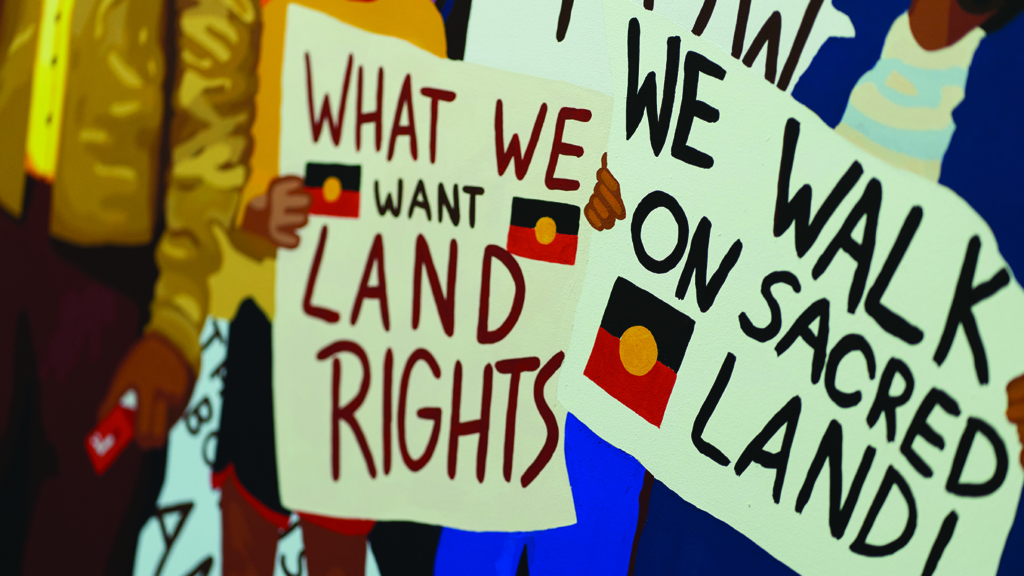
Behrendt herself is a major cultural activist of serious force and energy: she is a distinguished legal academic, has authored several books and has now become a very fine documentary filmmaker. In a time when many powerful Aboriginal voices – especially female voices – are demanding to be heard, Behrendt’s approach is particularly noteworthy for its considered strategy, focus and pitch. Over the last decade, she has developed and refined an approach to documentary filmmaking as a form of targeted activism, finding subjects whose stories open up links to long-repressed questions of history, culture, social and political justice, and truth-telling. Her first major documentary, After the Apology (2017), remains a crucial film document concerning child removals from Aboriginal families;[12]See Aimee Knight, ‘“Don’t Do It Again”: Hearing, Seeing and Deep Listening in After the Apology’, Metro, no. 196, 2018, pp. 70–5, available at <https://metromagazine.com.au/dont-do-it-again/>, accessed 17 November 2022. while her more recent Araatika: Rise Up! (2021) intelligently focuses on the challenges faced by First Nations rugby league players and their long-running endeavours for meaningful cultural representation.
In You Can Go Now, Behrendt displays a very clear and exciting development of her approach to documentary construction. The film works brilliantly as a kind of biography because Behrendt finds an angle and a structure through which her subject’s multivalent aspects can comfortably sit. It would be going too far to say that we see ‘the real Richard Bell’ in You Can Go Now; but what we are given is a chance to experience and accept his varying and contradictory natures – and, thus, to get a glimpse of the contemplative artist beneath.
It would be going too far to say that we see ‘the real Richard Bell’ in You Can Go Now; but what we are given is a chance to experience and accept his varying and contradictory natures – and, thus, to get a glimpse of the contemplative artist beneath.
Perhaps because Bell is too evasive a character and personality to warrant a complete biography, Behrendt casts her net more widely by relating his life to the vaster canvas of Aboriginal activism in Australia. We learn, in intimate detail, the childhood experience at the heart of the artist’s life, work and imagination: the destruction of his family’s home when he was a teenager in the mid 1960s. The tin residence, located outside the south-west Queensland town of Charleville, was built by his father, cooked in by his mother, slept in by Bell and his siblings, and crushed by a State bulldozer with family possessions still inside. With few housing options available, Bell’s family was moved to a condemned (but quickly redesignated by the housing authorities as ‘habitable’) property in town. Bell relates in the film:
I didn’t mind that we had to move into town, but they fucking moved us into a condemned house […] It was a shitty fucking house that they had previously deemed unfit for human habitation.
At the most pivotal time in an adolescent’s mental and emotional development, when the very ethical core of their worldview is formed, Bell experienced the full brunt of administrative incompetence mixed with racial discrimination. The documentary reveals this experience as formative to the political and aesthetic attitude he has brought to all his subsequent dealings with the colonial State – one often expressed with a middle finger.
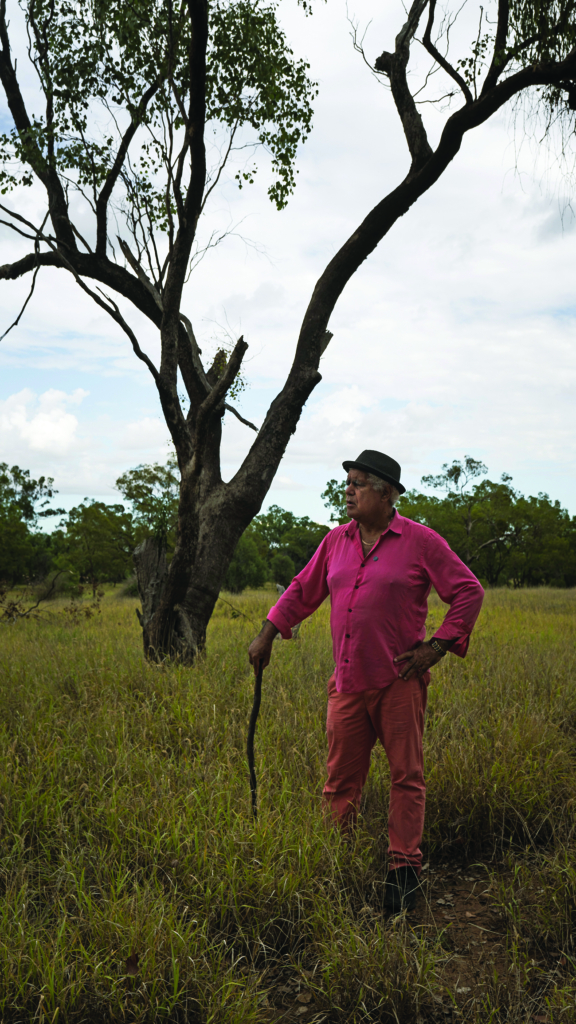
Like so many First Nations people of his generation, Bell soon wound up in Redfern, and found himself in an electric milieu of cultural activism and radical politics. At this point in its narrative, You Can Go Now expands its canvas, dwelling less on Bell’s personal involvement than on the crucial collective actions and movements of this period. Behrendt’s film focuses in particular on the establishment of the Aboriginal Tent Embassy in 1972, which Worimi historian John Maynard in the documentary calls ‘the most significant moment in Aboriginal political history’. The influence of the Tent Embassy on Bell’s art may seem oblique (the artist quips in the film that what mainly attracts him to his work is that ‘you can say and do stuff and not get arrested’), but it is certainly evident. His 2013 installation Embassy – which featured at the Art Gallery of South Australia in October 2022, on the weekend of the documentary’s premiere at the Adelaide Film Festival – is, in fact, directly inspired by it. Though the Tent Embassy is a solemn place of protest that has been a site of stand-offs with police, mass arrests and violence, it was also from the beginning a wonderful piss-take – a satirical subversion of colonial power. After all, if treated as aliens in your own land, why not set up an embassy? As Tony Coorey, one of the Tent Embassy’s founders, explained at the time (in a speech read out in the documentary by Gumbaynggirr activist and academic Gary Foley, another key figure in the embassy’s formation),
The Prime Minister’s statement has effectively declared us aliens in our own land. If we are aliens in our own land, we should have an embassy like all the other aliens – only, our embassy won’t be a big flash mansion up in Narrabundah somewhere; our embassy will reflect the reality of Aboriginal people’s living conditions.
Foley’s contribution to the film is significant: perhaps the most eloquent spokesperson and historian of Aboriginal activism, he offers descriptions of the period and its politics with a substantiveness that a more evasive artist like Bell is not inclined to offer. These two very different but equally driven men have had an enduring friendship, as the documentary makes plain in scenes in which we see them hanging out or enjoying a drink together. Alongside Foley’s testimony, You Can Go Now includes commentary by a remarkable selection of contemporary First Nations artists and scholars, including Aileen Moreton-Robinson, Chelsea Watego, Vernon Ah Kee, Maynard and many more. It’s particularly pleasing to see younger voices also given some airtime, so that the film doesn’t get lost in reminiscences about the 1970s.
As tempting as it may be to doubt the genuineness of Bell’s radical politics, there is no mistaking that he has endured the rough end of the colonial stick. Having grown up disenfranchised and dispossessed, and having had little traditional cultural life to rely on for strength and identity, he has had every reason to define his life’s work as a resistance to colonisation. This experience – of being stuck in a no-man’s-land that was claimed by the Crown – is key to any real understanding of his work. As an artist, Bell speaks both for himself and on behalf of countless other Aboriginal people who have been dispossessed of their culture and country and discriminated against by colonial society. Sometimes, he states it bluntly in his work; at other times, he’s evasive or even denies it. But, consistently, his message is clear: My art is an autonomous, free, self-determined territory. White power doesn’t get to define it. You can bulldoze my home, but you don’t get to define what my art is.
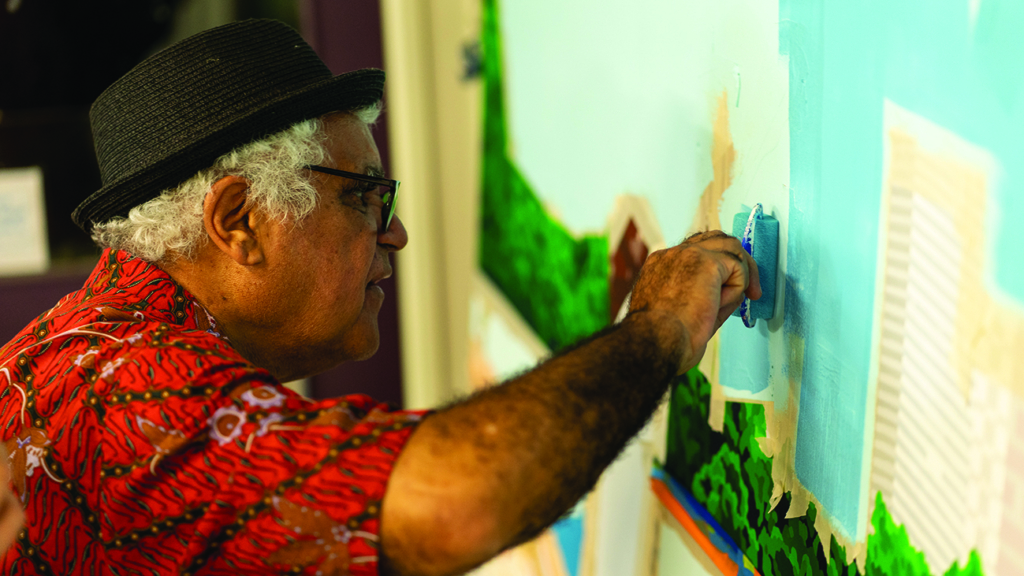
To achieve his activist goals, Bell uses a devious and flexible mode of subversion: primarily, an undermining of the colonial desire to define, categorise and conquer. As academic Marcia Langton describes, colonial power in Australian society has always been most powerfully and incoherently expressed through discursive attempts to name and label First Peoples:
These definitions [of Aboriginality] reflect not only the Anglo-Australian legal and administrative obsession, even fixation, with Aboriginal people, but also the uncertainty, confusion and constant search for the appropriate characterisation.[13]Marcia Langton, ‘Aboriginal Art and Film: The Politics of Representation’, in Michele Grossman (ed.), Blacklines: Contemporary Critical Writing by Indigenous Australians, Melbourne University Press, Melbourne, 2003, p. 116.
In Bell’s many works, or provocations, we clearly see the horrible, dehumanising power of this colonial discourse: the power to determine someone’s humanity, cultural status, law and justice. But at the same time, we also see the free Aboriginal artist’s natural liberty to destabilise the colonial foundations of this discourse, including the colony’s almost comical lack of a sense of place and reason for being – and, of course, the banal obviousness of its theft and deceit. This is where Richard Bell the activist becomes Richard Bell the satirist: when the exposure of truth provoked by the artwork leads to an exposure not just of injustice but also of the ludicrous stupidity underlying it. This refusal to endow his struggle with solemnity is what makes Bell as rare as he is important; the tightly clenched anger of his activism is augmented by the lack of self-righteousness evident in the devious silliness of his satire.
The affirmation in Behrendt’s work in You Can Go Now is that it gives a human face to her subject’s subversive, stubborn and frankly impossible politics. That may sound too coy to be genuine; nonetheless, by the end of this film, Bell does at last come across as a sensitive and intelligent artist – albeit one who still refuses to provide his audience with the illusion of hope. He is also, the documentary shows, a hurt and heartbroken person with an astonishingly deep memory. ‘I don’t have any hope,’ he says. ‘There is no hope unless we make it happen.’
In the cultural battle that Bell has fought and continues to fight against colonialism and its art industry, there’s an intimidating longevity of committed intent. It’s as if he has been holding a staring contest with white Australia, and his victory lies in having been the last to look away.
Endnotes
| 1 | See Hetti Perkins, ‘Hetti Perkins: You’re Aboriginal All the Time … You Can’t Just Clock Off’, The Guardian, 7 July 2014, <https://www.theguardian.com/culture/australia-culture-blog/2014/jul/07/hetti-perkins-youre-aboriginal-all-the-time-you-cant-just-clock-off>, accessed 30 December 2022. |
|---|---|
| 2 | See Anthony Ham, ‘Australia’s Western Desert Art Movement Turns 50’, Smithsonian Magazine, 13 May 2022, <https://www.smithsonianmag.com/arts-culture/australias-western-desert-art-movement-turns-50-180980067/>, accessed 17 November 2022. |
| 3 | See Stephen A Russell, ‘A Light in the Dark: Nel Minchin on Firestarter – The Story of Bangarra’, Metro, no. 208, 2021, pp. 44–9, available at <https://metromagazine.com.au/a-light-in-the-dark/>, accessed 17 November 2022. |
| 4 | See Barnaby Smith, ‘Lingering Notes: A Song Cycle Remembered in Philippa Bateman’s Wash My Soul in the River’s Flow’, Metro, no. 213, 2022, pp. 70–4, available at <https://metromagazine.com.au/lingering-notes/>, accessed 17 November 2022. |
| 5 | See Ross Purdie, ‘Yunupingu Broke Indigenous Barriers’, News.com.au, 3 June 2013, <https://www.news.com.au/national/breaking-news/yunupingu-broke-indigenous-barriers/news-story/546d6fe2c0a8b872548bf2b48d2e5611>, accessed 17 November 2022. |
| 6 | See John McDonald, ‘Provocative Artist Richard Bell’s Message Rings Like a Clarion Call’, The Sydney Morning Herald, 15 October 2021, <https://www.smh.com.au/culture/art-and-design/provocative-artist-richard-bell-s-message-rings-like-a-clarion-call-20211008-p58ydg.html>, accessed 17 November 2022. |
| 7 | Richard Bell, ‘Bell’s Theorem: Aboriginal Art – It’s a White Thing!’, The Koori History Website Project, November 2002, <http://www.kooriweb.org/foley/resources/art/bellessay.html>, accessed 17 November 2022. |
| 8 | ibid. |
| 9 | The film takes its name from Bell’s recent solo exhibition at the Museum of Contemporary Art Australia, showcasing and celebrating thirty years of the artist’s distinctive activism. See ‘Richard Bell: You Can Go Now’, Museum of Contemporary Art Australia website, <https://www.mca.com.au/artists-works/exhibitions/richard-bell-you-can-go-now/>, accessed 17 November 2022. |
| 10 | See Andrew Taylor, ‘Portrait of an Artist as an Angry Man’, The Sydney Morning Herald, 18 June 2013, <https://www.smh.com.au/entertainment/art-and-design/portrait-of-an-artist-as-an-angry-man-20130617-2oe7w.html>, accessed 17 November 2022. |
| 11 | See Rachel O’Reilly, ‘Dream Teaming: Richard Bell’s Embassy’, Visible Project website, <https://www.visibleproject.org/blog/text/dream-teaming-richard-bells-embassy/>, accessed 17 November 2022. |
| 12 | See Aimee Knight, ‘“Don’t Do It Again”: Hearing, Seeing and Deep Listening in After the Apology’, Metro, no. 196, 2018, pp. 70–5, available at <https://metromagazine.com.au/dont-do-it-again/>, accessed 17 November 2022. |
| 13 | Marcia Langton, ‘Aboriginal Art and Film: The Politics of Representation’, in Michele Grossman (ed.), Blacklines: Contemporary Critical Writing by Indigenous Australians, Melbourne University Press, Melbourne, 2003, p. 116. |
